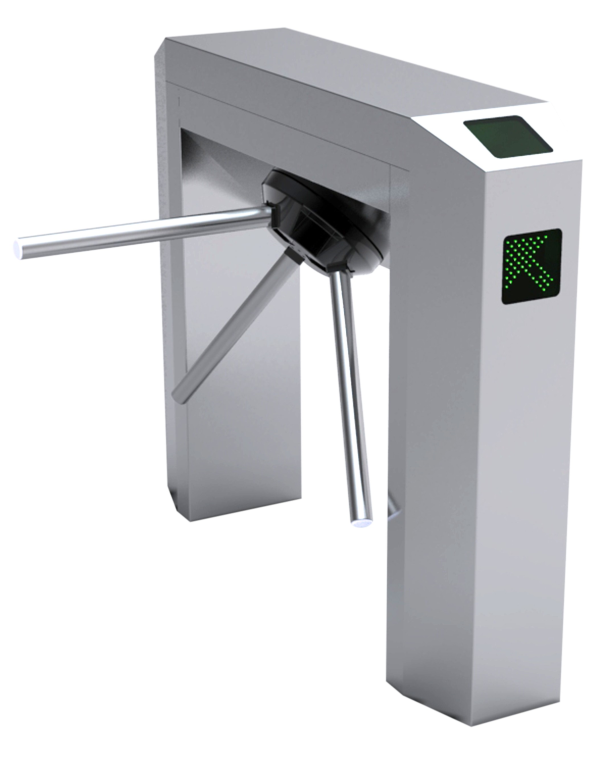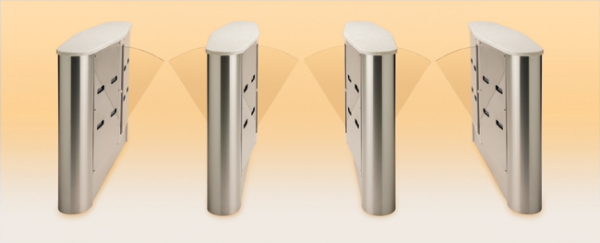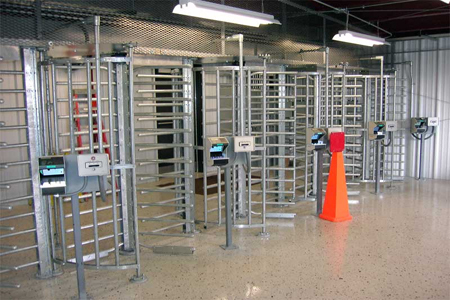2025-09-11 02:03:24 am
| Turnstiles are a form of gate that allows one person to pass at a time in one direction. Also known as a baffle gate, they can be accessed by payment (coin, token, or card) or are used simply to count the amount of people passing through and control the amount of people entering through a point. They are often found in amusement parks, airports, or subway terminals. The word “turnstile†is derived from the word “stileâ€, which is a type of fencing generally used for livestock that is structured in such a way (using steps, ladders, or narrow passages) that allows humans to pass without using a gate and without the risk of livestock escaping. There are three main types of turnstiles: waist-high, optical, and Roto-gates |
 |
| A waist high turnstile, or 'half-height turnstile', is a mechanical turnstile or mechanical gate that is made up of four revolving horizontal arms that are fixed to a vertical post, allowing only one person at a time to pass through. This allows security personnel to have a clear view of each person, and easily isolate potential trouble. They also set the speed in which pedestrians are allowed to pass and thus, are a practical way to control pedestrian traffic. One problem with waist-high turnstiles is that they are easily jumped over or circumvented. |
 |
| Optical turnstiles, also known as 'intelligent admission turnstiles', offer a more hands-free method of pedestrian control. They are waist high gates without the horizontal arms. Instead, optical turnstiles use small lasers – infrared beams – to count persons passing through and recognize anyone entering without a valid pass. They are often used in conjunction with state of the art technology, software, card readers, and controllers in access control systems. By themselves, they do not physically keep people out who don't have a valid entry pass, and therefore may be better suited for entrance situations that simply need a counter and not a whole lot of security. Some models do, however, have the capacity to flash lights and sound alarms when security is breached. These models are still not practical in high trafficked, industrial setting such as stadiums or subways, but work well in office buildings or hotel lobbies where aesthetic are more important. |
 |
Roto-gates, also known as 'full-height turnstiles', are seven feet high stainless steel structures and look and operate similarly to a revolving door. HEET (High Entrance/Exit Turnstile) turnstiles can rotate in both directions, in and out, allowing for two-way traffic. Exit-only rotogates are more limiting, however, allowing people to only go in one direction (not in and out), in a single filed manner. Exit only turnstiles are commonly found in subway exits, allowing passengers to pass without permitting entrance by those who haven't paid. |
| Turnstiles, especially waist-high or full-height turnstiles, pose problems for those in wheelchairs and obese people. To counter this problem, many venues and establishments have manual entrance gates that allow wheelchairs, people with loads of cumbersome luggage, or those with some extra weight around the middle, to pass with the assistance of an attendant. Another solution to this problem are ADA turnstiles which are wider than standard waist-high turnstiles and do not use a mechanical arm which can be heavy and hard to push. Instead they use two lightweight, stainless steel horizontal arms, at least 36 inches (3 feet) long with a rounded end that can easily be pushed open. These turnstiles are ADA-approved (Americans with Disabilities Act) for easy compliance with local handicapped laws. |
|





